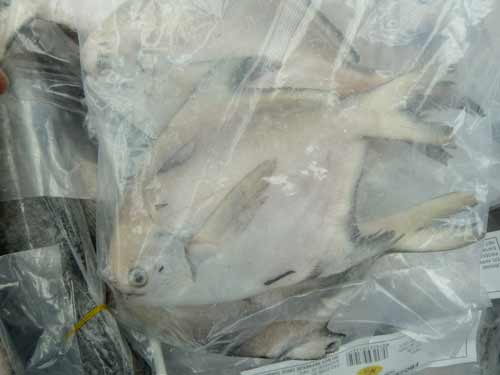
Breadfruit. Generally eaten as a vegetable and related to the fig. The fruit resembles a round or oval melon, 20-25.5 cm (8-10 inches) in diameter with a thick, rough, yellowish-green rind which ripens to brown. It is so named because the pale, pulpy flesh around the large central core has a mild flavour similar to fresh bread or globe artichokes. To use, peel it and then either bake, fry or boil it, or it can be made into soup. It can be part of either sweet or savoury dishes. It grows on a tall tree with broad green leaves, providing shade as well as fruit. A well-watered tree can produce as many as 1000 fruits in a year.
Snake gourds are bright green, thin-skinned gourds which can grow as long as 2 meters (6 ft). Since they have a tendency to curl they can frequently be seen with rocks tied to them to keep them straight. They should be rubbed with salt to remove the downy surface of the skin and can then be cut open, the central core of seeds removed and then cubed or sliced for adding to stews and rasams. They do not have a great deal of flavour.

Pomphret, white or silver pomphret (US: pomfret). The white pomphret is slightly more of a delicacy than black or brown pomphret. The flesh falls away from the bones for easy eating.